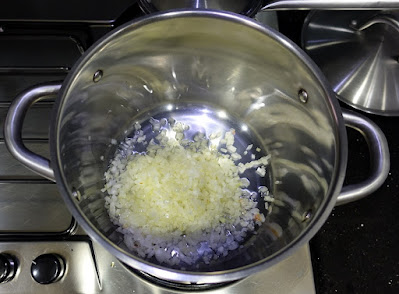Galbi Jjim (Korean Soy-Braised Beef Stew)
2차 백신 접종 후 3개월이 지났고 나아졌어요. 비타민C 치료 효과가 있어요! 내 친구도 2차 백신 접종 후 현기증 부작용을 있는데 남편의 인터넷 조사 덕분에 비타민C 치료를 먹고 잘 나았어요.
우연히도 한가위도 추석이었서 나는 정상 생활을 하고 있어 참참 감사해요. 나는 이제 요리와 운동과 운전과 같은 내가 좋아하는 모든 일을 할 수 있게 되어서 부스터샷이 걱정돼요.
우연히도 한가위도 추석이었서 나는 정상 생활을 하고 있어 참참 감사해요. 나는 이제 요리와 운동과 운전과 같은 내가 좋아하는 모든 일을 할 수 있게 되어서 부스터샷이 걱정돼요.
부작용을 최소화하기 위해 부스터샷이 2주 전에 먼저 비타민 C 치료를 시작하려고 해요. 예전보다 빨리 나아져서 정상 생활으로 돌아가고 싶어요.
요즘 드물게 블로깅을 안해서 미안해요. 연말에 일이 너무 바쁘고 많은 파티 때문에 블로깅 하는 시간이 없었어요.
================================
Apologies for the extended dormancy. The latter part of 2021 was a whirlwind of work, family commitments, and errands...u know, the usual gazillion adulting things. I never really realised how much people rush to meet their KPIs, (at the end of the year so as to make their bonus assessment dates), until last year. It was nuts, I was completely snowed under.
I've gotten a little reprieve at the start of a new year bc everyone's engines seem to still be warming up (ooh and a somewhat belated HAPPY NEW YEAR TO ALL!) so I'm now tryna chip away at the insane backlog, and what better way to kick off a fresh new year with a brand new post.
So, we had our favourite people over during the festive period. And while I wanted to cook Korean cuisine, there was one in our party who can't take spicy foods (and he's a Baba so go figure!), so I thought to cook Galbi Jjim. Traditionally served during Seollal (the Korean New Year, which typically refers to the Lunar New Year, but could also mean the first of January for the younger generation these days), it is a decadent dish symbolizing prosperity and laden with the best and most luxurious of ingredients. It may not seem all that luxurious to a first-worlder, but in the olden days, people seldom had access to a cut like the short rib, which was reserved for special occasions.
As usual, I preface this with the usual caveat that I bastardise my recipes (few of mine are ever really traditional anyway), this recipe is a lot less sweet than the classic. Many Korean dishes are heavy on the sugar, but I dial that back in my cooking. I like my sugar in my desserts, less so in my savoury foods.
I call Galbi Jjim the Korean version of our Peranakan tau yew bak. The flavour profile is similar: lots of black soy sauce, a little spice, and fragranced with toasty sesame oil. And bc the dish is so rich, banchan such as piquant kimchi and refreshing sigeumchi namul (seasoned spinach) make for perfect accompaniments.
Another thing about this dish, it can be prepared entirely beforehand (all the better bc the stew gets to meld and steep), and heated up for whenever you need it, freeing up time to cook other dishes if you're planning a big shindig. Which was exactly what I needed when I was hosting Christmas and New Year's dinners. Chilling the stew overnight also allows for the oil (invariably rendered bc short rib is so fatty) to solidify and thus extraction is far less unwieldy.
Ingredients (feeds 6-8 as a main dish):
1.8kg beef short ribs, bone-in
20 shiitake mushrooms, quartered
300gm daikon, cut into 1" cubes
300gm carrots, cut into 1" cubes
1 Hokkaido corn on the cob, cut into 1" thick semi-rings
20-24 chestnuts
150gm gingko nuts
1 large yellow onion, minced
4 cloves garlic, minced
800ml chicken stock
2tsp ginger powder
1 tsp ground black pepper
1/2 cup dark soy sauce
3 tbsp thick black soy sauce (the type served at chicken rice stalls)
1/4 cup brown sugar
1/2 cup sake
2 tbsp mirin
1/4 cup sesame oil
2 tbsp canola oil
Garnish: sesame seeds, sesame oil, shiso leaf ribbons, pine nuts
Directions:
1) Blanch the short ribs in salted boiling water, about 5 minutes. Drain, rinse (with cold water to get rid of the scum), and set aside.
2) Fry onions in a stew pot with 2-3 tbsp canola oil at medium-high heat until translucent, about 5-7 minutes.
3) Reduce heat to medium, add garlic, toss until fragrant, about 1 minute.
4) Return blanched short ribs to the pot.
5) Add mushrooms.
6) Add chicken stock, ginger powder, black pepper, dark soy sauce, thick black soy sauce, brown sugar, sake, mirin, and sesame oil.
7) Add chestnuts.
8) Add corn.
9) Add carrots. Bring to a boil, and simmer for 40 minutes. Skim off the oil, any crud, floating on top.
10) Add gingko nuts.
11) Add daikon, and simmer for another 20 minutes, or until meat is as fork-tender as you'd like.
12) Serve with a drizzle of sesame oil, sprinkle of sesame seeds, handful of pine nuts, and shiso leaf ribbons.
















Comments